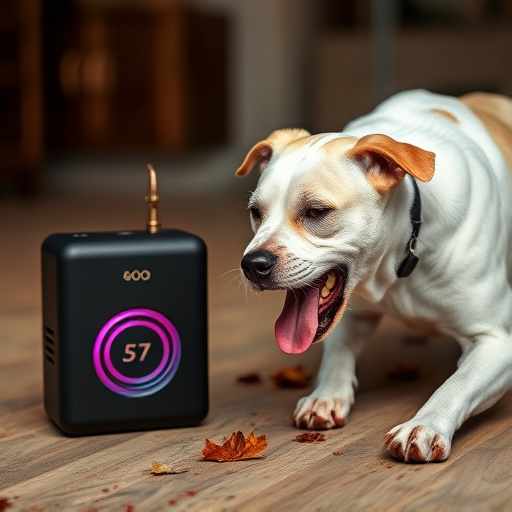Modern electronic dog deterrents use specific frequencies and sound patterns to prevent unwanted canine behavior. The effectiveness of these devices can be boosted by strategic mounting on walls, fences, or portable setups, offering flexibility to suit various environments and needs. Key considerations include frequency ranges targeting different behaviors, adjustable intensity levels based on pet sensitivity, and sensor-triggered frequency outputs to deter dogs without harm.
Keep your yard or space free from unwanted canine visitors with an effective dog repeller. This comprehensive guide explores how electronic dog deterrents work, focusing on understanding the crucial frequency range for successful scaring and training. We delve into practical mounting options to ensure peak performance, helping you choose the right deterrent based on specific needs. Learn how to effectively navigate your yard back from persistent pups, all while considering humane methods that won’t harm or distress them.
- Understanding Dog Repeller Technology and Its Frequency Range
- Exploring Different Mounting Options for Maximum Effectiveness
- Choosing the Right Electronic Dog Deterrent Based on Your Needs
Understanding Dog Repeller Technology and Its Frequency Range
Dog repellents, also known as electronic dog deterrents, have evolved significantly over the years, employing advanced technology to address unwanted canine behavior. These devices utilize specific frequencies or sound patterns to create an unpleasant experience for dogs, encouraging them to stay away from certain areas. Understanding the frequency range of a dog repeller is key to its effectiveness; different frequencies target varying behaviors and sensitivity levels in dogs.
The mounting options for these electronic deterrents are diverse, catering to various needs. Wall-mounted or fence-mounted devices offer wide coverage areas, ideal for larger properties where consistent protection is required. Alternatively, portable models provide flexibility, allowing users to move them between locations as needed. This versatility ensures that pet owners can implement the technology effectively, addressing specific issues without excessive use.
Exploring Different Mounting Options for Maximum Effectiveness
When it comes to electronic dog deterrents, choosing the right mounting option is key to maximizing their effectiveness. The location where a device is installed can significantly impact its range and performance. For example, mounting an anti-dog device on a fence or wall ensures a clear line of sight towards the target area, allowing for a more focused and powerful signal transmission. This is particularly useful in areas where dogs frequently trespass, like gardens or patios.
Different mounting options cater to various environments and preferences. Some devices offer versatile mounting kits, enabling users to attach them to posts, trees, or even vehicles. These adjustable setups are ideal for dynamic spaces where fixed structures might not be available. Additionally, wireless designs allow for flexibility in placement, letting you move the device to different locations as needed, ensuring constant protection without the hassle of physical installation.
Choosing the Right Electronic Dog Deterrent Based on Your Needs
When selecting an electronic dog deterrent, considering your specific needs is paramount. These devices operate on a range of frequencies designed to deter canine intrusions without causing harm. Some offer adjustable frequency settings, allowing you to fine-tune the intensity based on factors like your pet’s sensitivity and the proximity of neighbors’ dogs.
The mounting options for electronic dog deterrents also vary, catering to different preferences and environments. Wall-mounted units are discreet and suitable for use around homes or gardens. Stake-in-the-ground models provide more flexibility, ideal for larger properties or areas with complex terrain. Both options generally utilize a sensor to trigger the frequency output when a dog approaches, encouraging them to retreat without physical contact.
When selecting a dog repeller, understanding its frequency range and choosing the optimal mounting option are key. By strategically placing these devices, you can effectively deter unwanted canine intrusions while ensuring your pet’s safety. Consider your specific needs and surroundings to make an informed decision on the best electronic dog deterrent for your home or property. Remember, the right combination of technology and installation will lead to a peaceful and harmonious environment for both you and your four-legged neighbors.
